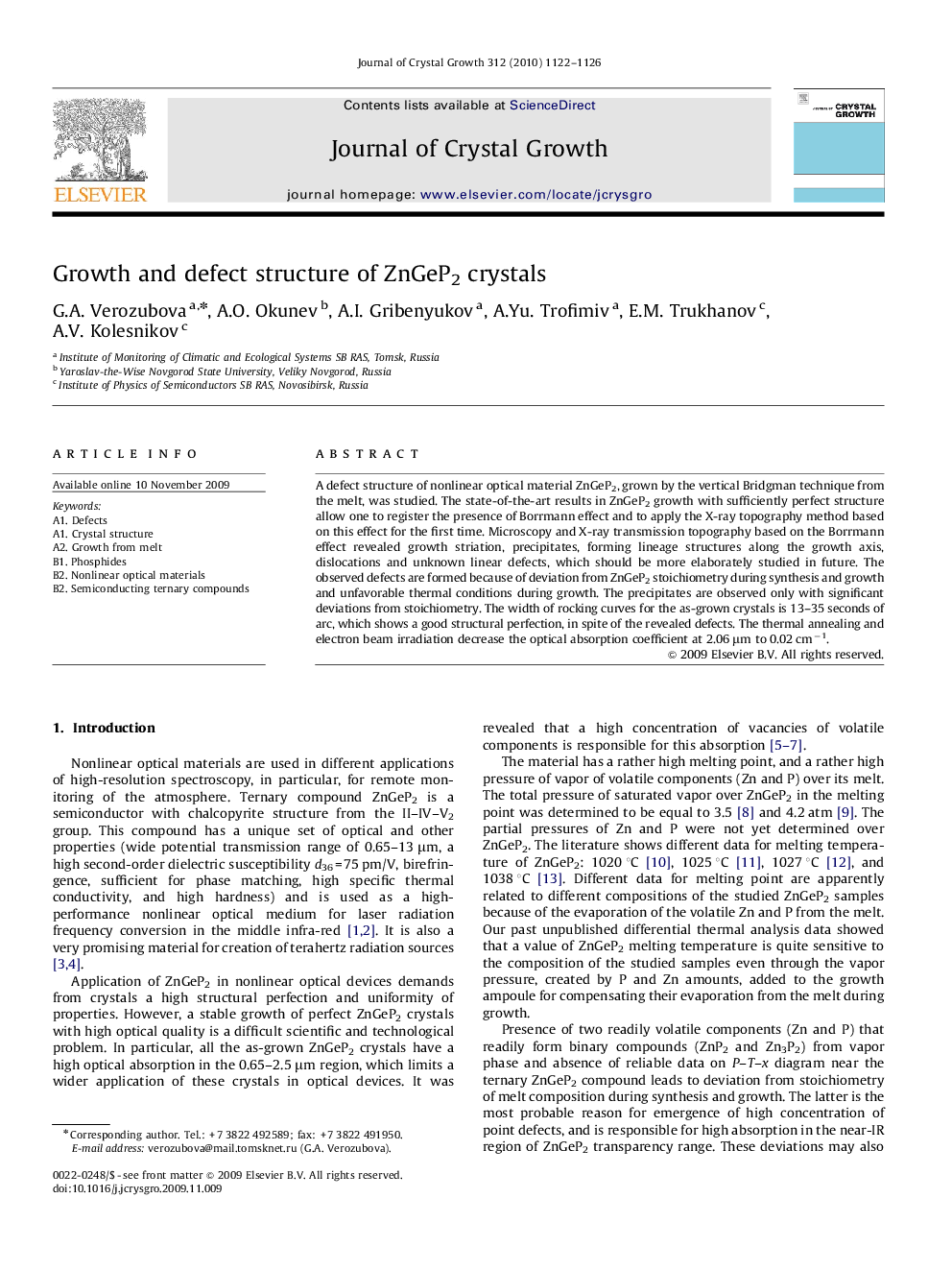| Article ID | Journal | Published Year | Pages | File Type |
|---|---|---|---|---|
| 1793460 | Journal of Crystal Growth | 2010 | 5 Pages |
A defect structure of nonlinear optical material ZnGeP2, grown by the vertical Bridgman technique from the melt, was studied. The state-of-the-art results in ZnGeP2 growth with sufficiently perfect structure allow one to register the presence of Borrmann effect and to apply the X-ray topography method based on this effect for the first time. Microscopy and X-ray transmission topography based on the Borrmann effect revealed growth striation, precipitates, forming lineage structures along the growth axis, dislocations and unknown linear defects, which should be more elaborately studied in future. The observed defects are formed because of deviation from ZnGeP2 stoichiometry during synthesis and growth and unfavorable thermal conditions during growth. The precipitates are observed only with significant deviations from stoichiometry. The width of rocking curves for the as-grown crystals is 13–35 seconds of arc, which shows a good structural perfection, in spite of the revealed defects. The thermal annealing and electron beam irradiation decrease the optical absorption coefficient at 2.06 μm to 0.02 cm−1.
